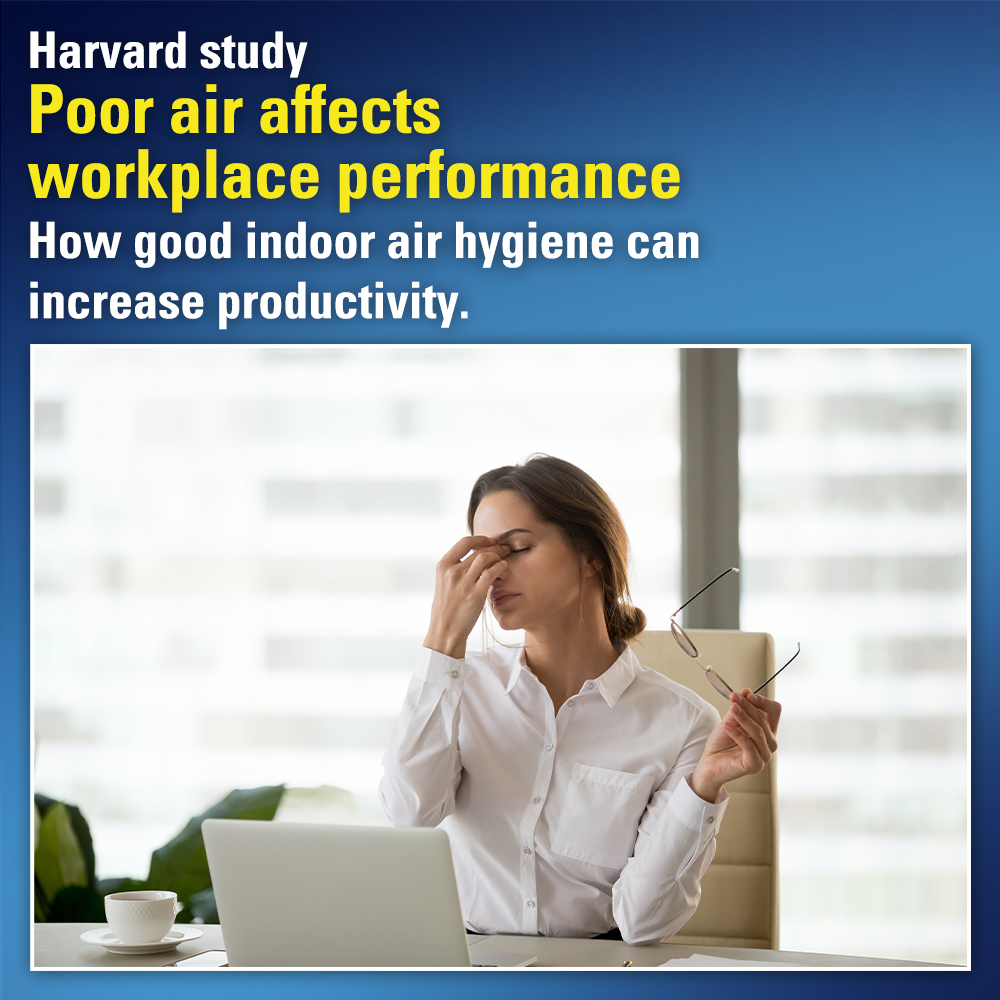 Harvard University researchers conducted a study in the USA that found a significant correlation between poor indoor air quality and decreased cognitive abilities and performance in office workers.
Harvard University researchers conducted a study in the USA that found a significant correlation between poor indoor air quality and decreased cognitive abilities and performance in office workers.
They found that the negative health impact of air pollution, especially fine dust, is much greater than previously realised. As such, employers should prioritise the indoor air quality of their workplaces, using tools such as air quality monitoring and mobile air purifiers to create a healthier and more productive work environment for their workforce.
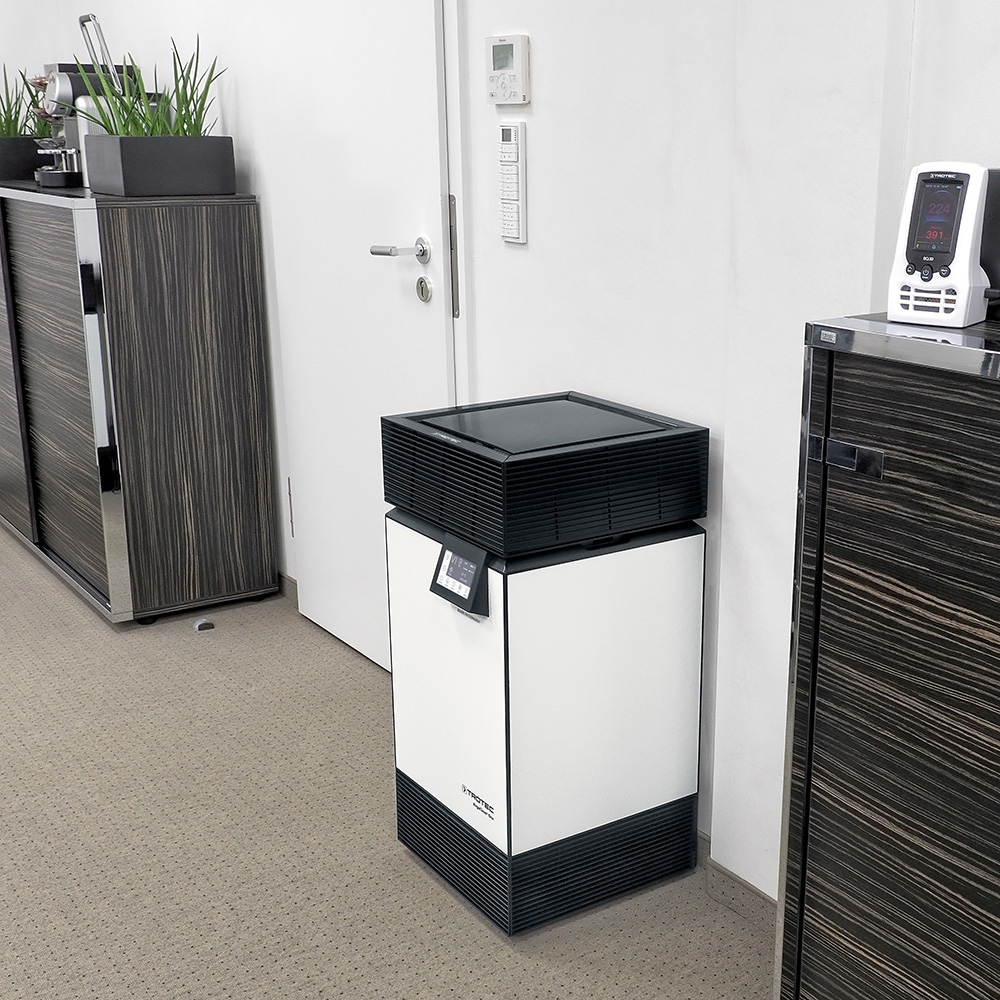
Harvard study: Fine dust in indoor air negatively impacts work performance
Harvard University researchers conducted the Global CogFX study, which involved a 12-month examination of 302 office workers across six countries. The study used air quality monitors, including Trotec’s BQ30, to measure real-time levels of fine dust (particle size 2.5 micrometres), carbon dioxide, temperature, and humidity in the workplace. In addition, a custom mobile app was used to evaluate the cognitive abilities of the participants.
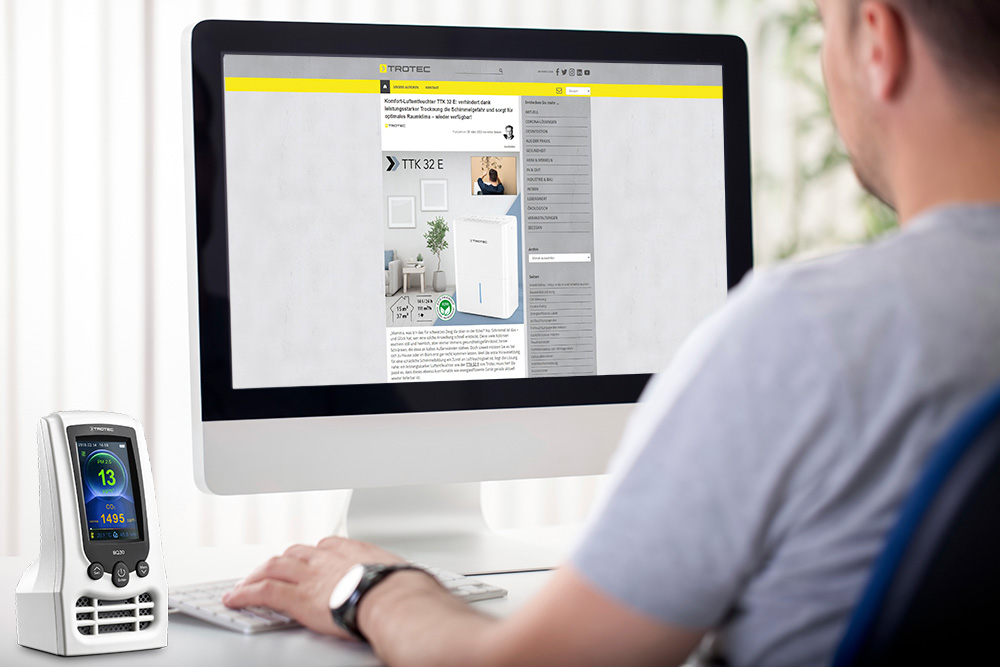
The study’s key finding was that as the levels of particulate matter and CO2 in the office air increased, there was a measurable decrease in work performance among the participants
The study found that a 10 ug/m3 increase in the concentration of fine dust in indoor air resulted in a 1% decrease in cognitive performance, as indicated by slower and more incorrect responses in the tests. Similarly, an increase of 500 ppm in the concentration of CO2 in the indoor air also caused a comparable decline in thinking skills among the study’s participants
Consequences of poor indoor air in the workplace:
- Slower reaction times
- Reduced accuracy in the activities performed
Multiple causes of poor air quality
The emission sources of fine dust in workplaces include laser printers and modern 3D printers, as discovered in a US study conducted by the Illinois Institute of Technology and commissioned by the American health authority, CDC. The study found that some printers produced up to 20 times more ultra-fine dust than low-emission printers, primarily due to the materials used in printing (PLA and AMS plastics).
The Federal Environment Agency (UBA) states that sources of fine dust particles in addition to printers include inner-city motor vehicle traffic, power plants and nearby industrial facilities. These particles can enter indoor spaces through open windows, as well as by adhering to clothing and shoes, resulting in a measurable increase in pollution values.

Ventilation alone does not protect against bad air
The issue at hand is that while regular workplace ventilation is important to exchange stale air with fresh air and prevent symptoms of fatigue and discomfort due to increased CO2 concentrations, it also introduces air pollutants such as fine dust particles from the outside into indoor spaces. This is especially true of industrial areas and urban areas with high traffic volumes, where additional measures to improve indoor air quality are required.
Increase workplace productivity with good indoor air hygiene
Employers can effectively protect against the negative effects of particulate matter in the workplace through simple and cost-effective measures.
Anyone who is interested in assessing the quality of the indoor air in their workplace, including the CO2 concentration and fine dust pollution, as well as determining if measures need to be taken to improve air quality, can find all the necessary resources in the Trotec Online Shop.
Monitoring indoor air quality – keeping track of the air we breathe
Employers can rely on the practical BQ30 air quality monitor to keep an eye on the indoor air quality. This device measures both the CO2 concentration in the room air and displays the measured value clearly on the LCD display. The measuring device is equipped with laser technology that can easily detect the tiniest air impurities in the form of PM2.5 and PM10 particles, measuring their concentration in micrograms per cubic metre. This makes it possible to immediately identify and visualize dangerous concentrations of fine dust particles in the indoor air.
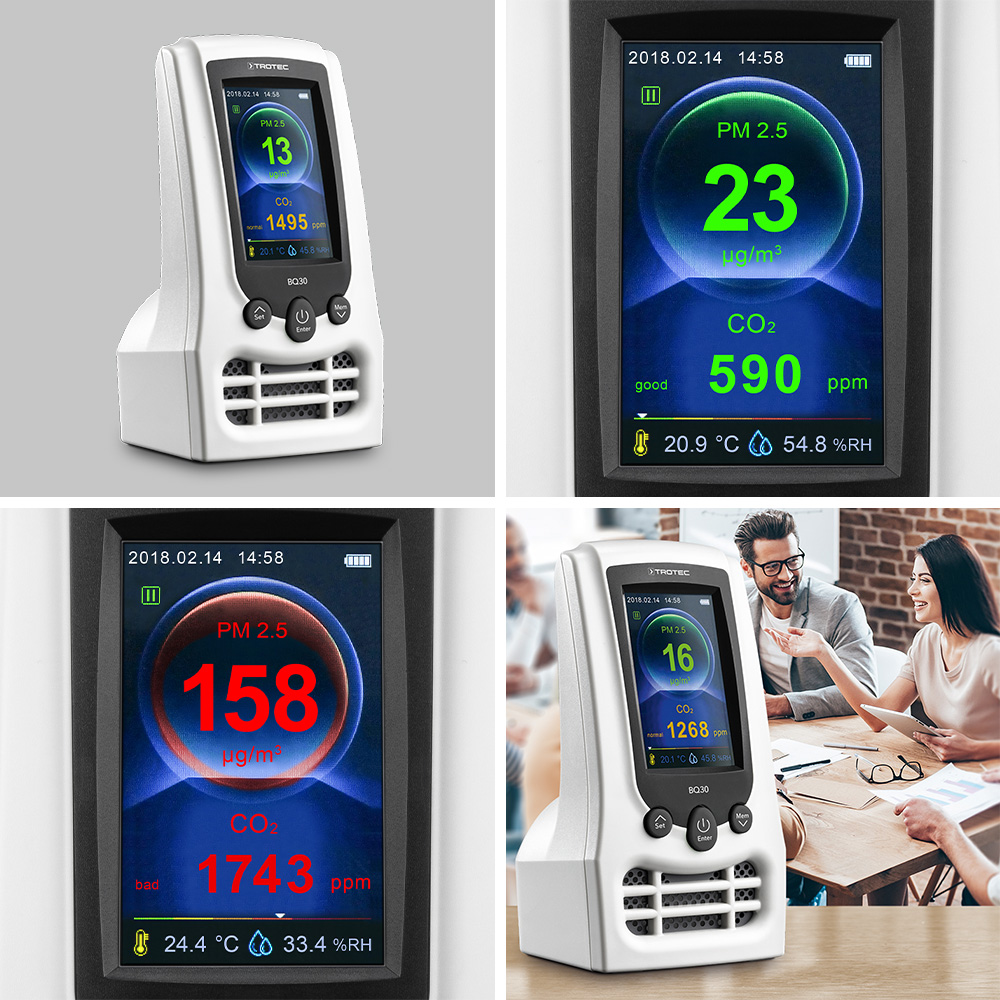
The BQ30’s large colour LCD displays real-time data:
- CO2 content in the room air
- Particle mass concentration in the air
- Air temperature
- Relative humidity
Achieve clean air and low fine dust levels indoors with the AirgoClean® air purifier
AirgoClean® air purifiers from Trotec are the ideal solution for those who want to ensure permanent protection against harmful fine dust particles as well as airborne viruses including flu, rhinovirus, respiratory syncytial virus (RSV), and coronaviruses. AirgoClean® air purifiers from Trotec offer the added benefit of reducing the need for excessive ventilation. This can result in cost savings, particularly with the current high energy prices. With less need for ventilation, indoor spaces can retain their warmth.
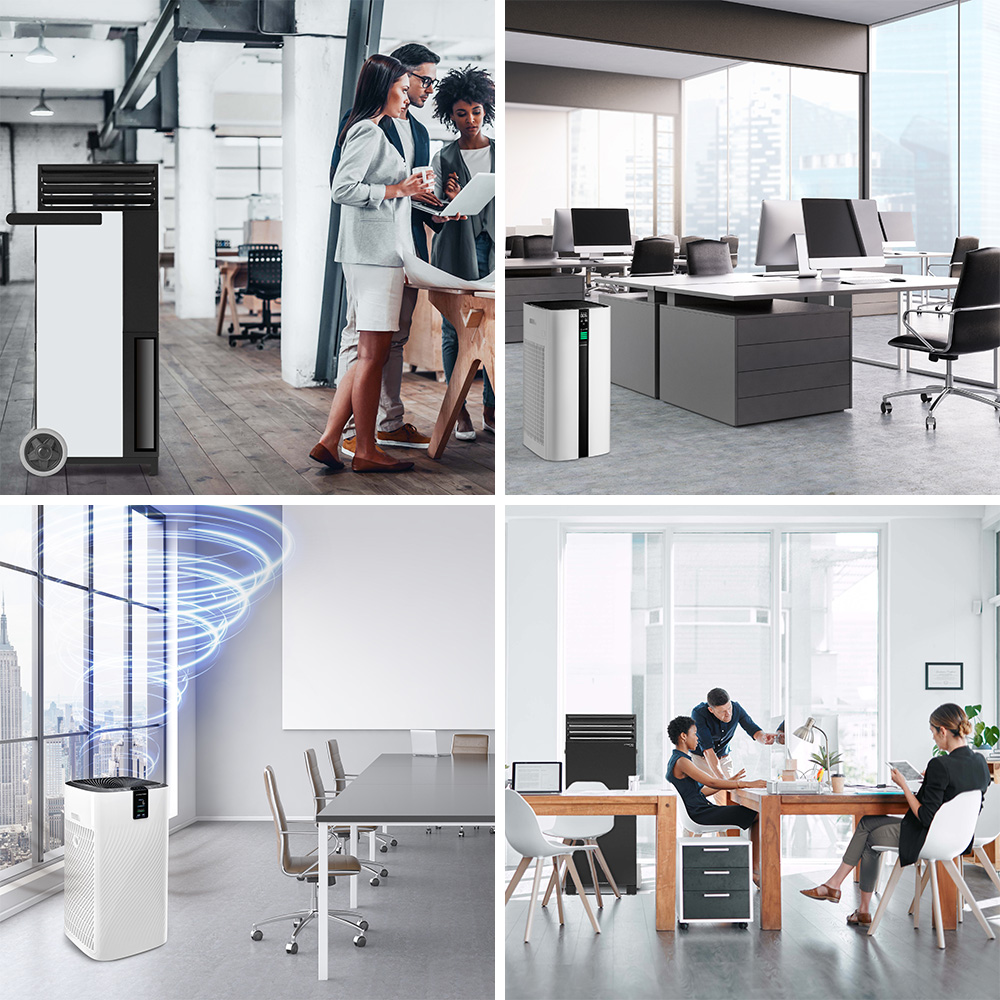
HEPA filter technology removes fine dust from the air
The portable AirgoClean® series air purifiers are equipped with highly efficient HEPA filters that can remove more than 99% of all suspended particles from the room air, ensuring healthier breathing in and out. The series is capable of filtering out fine dust particles, pathogenic viruses, bacteria, pollen, and allergens from the room air.
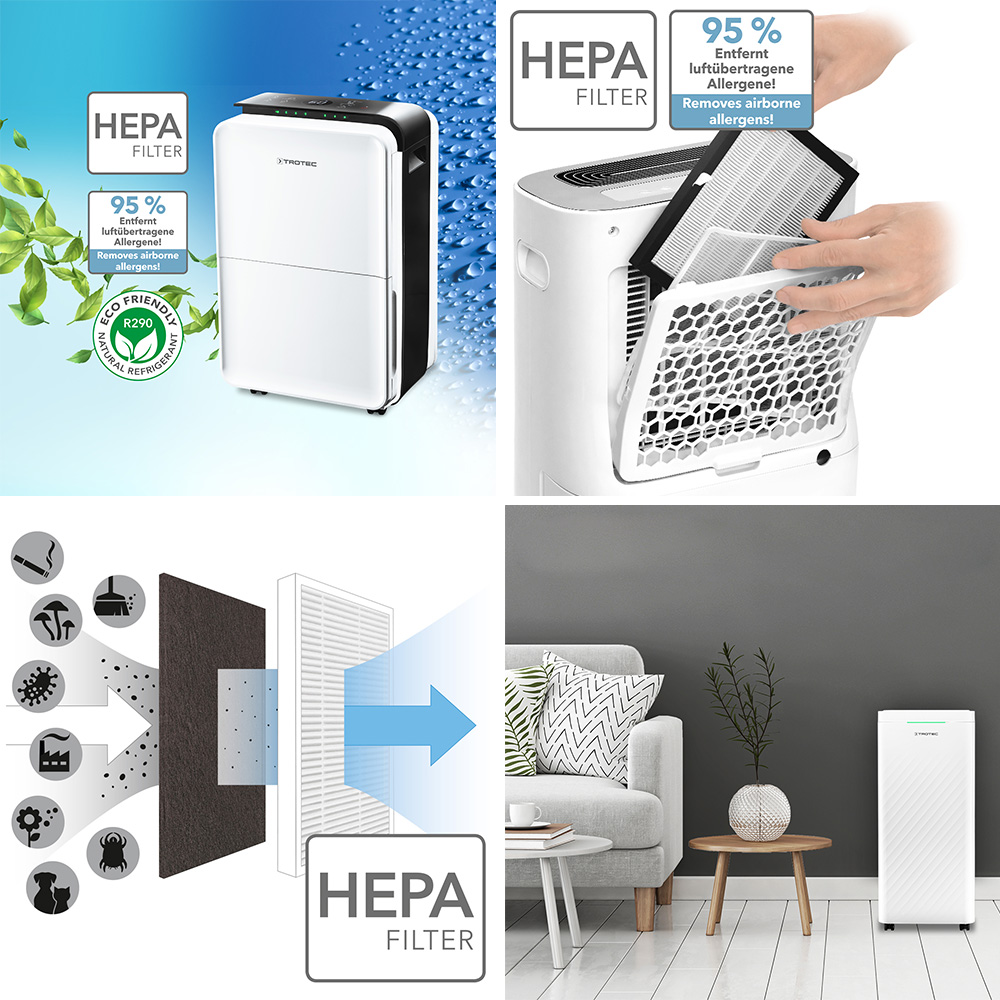
Extremely practical: AirgoClean® air purifiers come with an integrated air quality display, making the invisible air quality visible. The display shows the numerical value of the PM2.5 (fine dust particles smaller than 2.5 µm), and a visual display with colour LED lights indica
TAC high-performance air purifiers ensure maximum protection against fine dust hazards in the workplace
Five models in two device variants – each with proven filter effectiveness for protection against fine-dust particles and airborne pathogens make the TAC series a flexible and scalable air purification solution for workspaces in industrial environments.
- Extremely robust construction for professional use
- High flexibility of use due to mobility; simply set up where a high level of protection against airborne risk is required
- Air volume up to 2,100 m³
- H14 high-performance HEPA filter according to EN 1822
- Constant air volume flow, even with increasing filter contamination
- Fully automatic operation through flexible programming
- Sensor-controlled filter change indicator (pre-filter and main filter) for longer filter service life
- Low noise level
- Made in Germany

